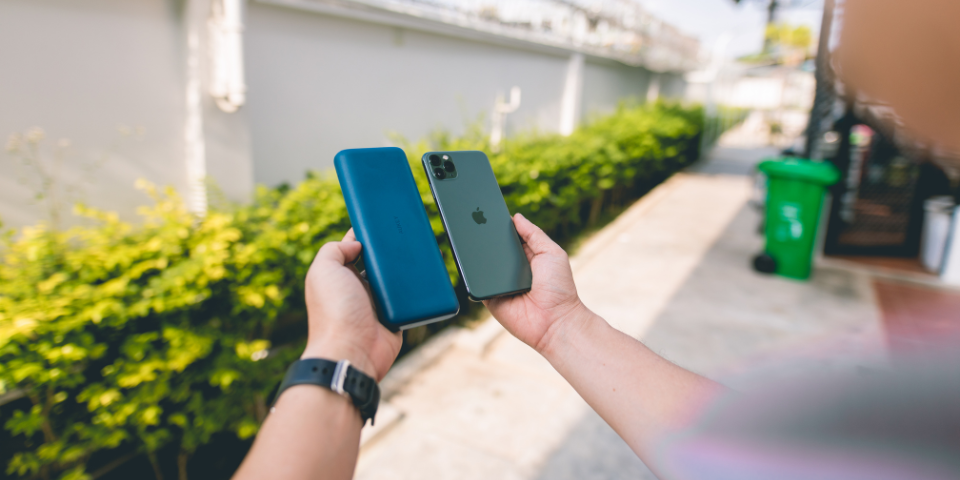
How to Find Your IMEI Number
Every mobile phone has a unique IMEI (International Mobile Equipment Identity) you can use to check your device’s compatibility with a different mobile network, verify blacklist status, or recover a lost or stolen phone. Providers can check IMEI to block devices that have been stolen, and your IMEI will be a must if you want to sell your mobile device. However, there are a variety of simple ways to find your IMEI number whenever you need it.
What Is an International Mobile Equipment Identity Number?
The IMEI is a 15-character string with three different parts. The first eight characters are the Type Approval Code (TAC), which outlines the exact device model. The next six compose the serial number, which distinguishes your phone from others of the same model. Then, there’s one last digit, the Check Digit.
Why You Might Need Your IMEI Number
The IMEI number is not just a piece of technical data—it can be helpful in real-world situations. Here are a few reasons you may need to locate it:
- Verify authenticity: When buying a used phone, a quick IMEI check can confirm if the device is legitimate or blacklisted.
- Access network services: Some mobile networks may require your IMEI number to activate service on your device.
- Report a lost or stolen phone: In case of loss, reporting your IMEI number to the authorities and your carrier can help block the device from being used.
- Access repair services: Many technical support services use the IMEI to identify your device and ensure proper servicing.
How to Find Your IMEI Number on Different Devices
Depending on the type of device and the software version, several methods exist to find your IMEI number.
1. Check Your Phone’s Settings
The quickest way to find your phone’s IMEI number is through the settings menu on both iPhones and Android devices.
- On an iPhone: Go to the Settings app, tap on General, then About. Scroll to find the “IMEI” section displaying your device’s unique number.
- On Android devices: Open Settings, scroll to About Phone, and select Status or IMEI Information. Here, you should see the IMEI number.
2. Look at the Original Packaging
If you still have your phone’s original packaging, the IMEI number is often printed on the box. This can be useful if you can’t power on the device or access the settings menu. The number is typically located near the barcode and other device information, such as the model and serial numbers.
3. Dial a Code to Retrieve the IMEI
An easy way to access your IMEI is by dialing a specific code.
- Open the dialer app on your phone and enter *#06#.
- The IMEI number will appear on the screen instantly. This method works on most mobile devices and doesn’t require navigating settings.
4. Check the Physical Device for the IMEI
In many phones, especially older models, the IMEI number is printed directly on the physical device.
- Under the battery: The IMEI is often printed on a label under the battery for phones with removable batteries. Simply remove the battery and look for a label with your IMEI and other details.
- SIM tray: For newer smartphones, especially iPhones, the IMEI may be printed on the SIM tray. Remove the SIM card tray and inspect it closely for a small 15-digit number.
5. Use iTunes for Apple Devices
If you have an Apple device like an iPhone or iPod Touch, you can also access the IMEI through iTunes.
- Connect your Apple device to a computer and open iTunes.
- Select the device icon in iTunes to view its details.
- Under the Summary tab, click on Phone Number until the IMEI number appears.
This is particularly useful for finding your device’s IMEI if you can’t access the settings or the phone itself.
How to Use Your IMEI Number
Once you’ve located your IMEI number, you can put it to use in various ways:
- Check your IMEI online: Enter IMEI numbers into an IMEI checker to confirm your phone’s status. Many mobile carriers provide online tools to enter your IMEI and verify your phone’s blacklist status, carrier compatibility, and other information.
- Confirm repair services: When you send your phone to a repair center, your IMEI helps confirm your device and track its service history.
- Report a lost phone: Reporting your IMEI to your mobile carrier can help block the phone, making it unusable on most mobile networks.

Consider Selling Your Phone to ecoATM
Knowing your IMEI number is also helpful if you plan to sell your device. If you’re considering upgrading to a new phone, we offer a quick, easy way to turn your old device into fast cash. Get an instant quote online now and save time at the kiosk. Support sustainability and put extra cash in your wallet today with a little help from ecoATM.
How do I check my IMEI number?
You can check your IMEI number by dialing *#06# on your phone’s keypad. Alternatively, you can find it in your phone’s Settings under About Phone or General > About on iPhone models. It’s also often printed on the SIM tray or the device’s original packaging.
Is the IMEI only 14 digits?
A standard IMEI number has 15 digits. Some displays may show the first 14 digits with an additional “check digit” added at the end to ensure accuracy. This check digit occupies the 15th position.
What happens if someone gets your IMEI number?
If someone has your IMEI number, they could report your phone as lost or stolen, which could result in the device being blocked from mobile networks. Therefore, it’s best to keep your IMEI number private and share it only with trusted sources, such as your carrier or phone repair services.
Where to find IMEI number on phone?
Your IMEI number is in your phone’s Settings menu under About Phone. You can also locate it by dialing *#06# on your keypad. For many devices, it’s printed on the SIM tray or the back of the phone, or you can find it on the original box if you still have it.





